Project List Summary
2. Education
3. Conservation
4. Maintenance
- Caiman Monitoring
- Mammal Monitoring
- Reforestation of Degraded Ecosystems
- Creation of Artificial Rainforest Ecosystems
- Bird Watching
- Agroforestry & Neotropical Permaculture
- Herpetology
- Reserve Patrols and Rainforest Expeditions
- Trail Maintenance
- Construction
Peru is the second country to own the largest part of rainforest in Latin America. Half of its territory (70 million hectares) is composed of forest, which means 13% of the Amazonian forest. This particular biome contains the planet’s richest biodiversity.
Activities completed by volunteers on the reserve contribute to the advancement of the 7 project categories described below. However, there will be other activities volunteers participate in that are short-term and may not be related to our on-going projects.
Caiman Monitoring: Research on the Amazon’s Largest Predator
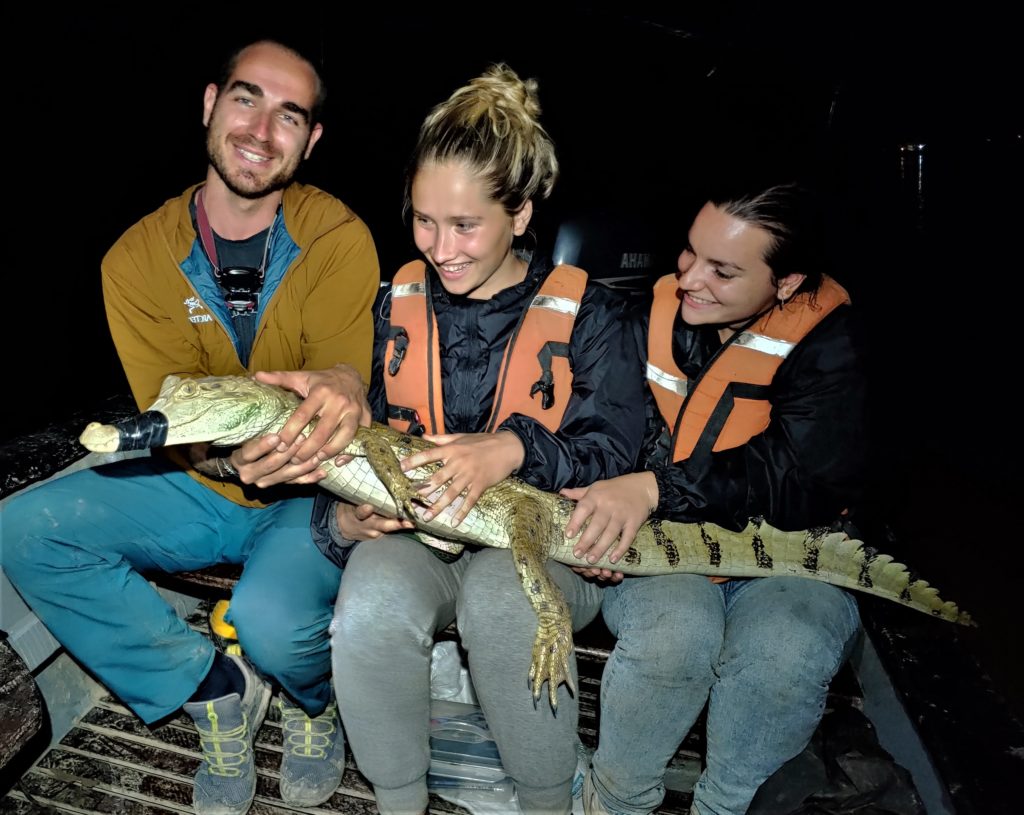
Weekly caiman monitoring is one of the missions we greatly care for here at Panthera sanctuary. Collecting data on these wonderful animals and monitoring their general health helps us understand more about their behavior and how to protect this keystone species.
Our staff is trained to teach you how to catch caimans in their natural habitat and safely handle them to protect both you and them.
Mammal Monitoring: Attracting Some of the Amazon’s Most Fascinating Biodiversity
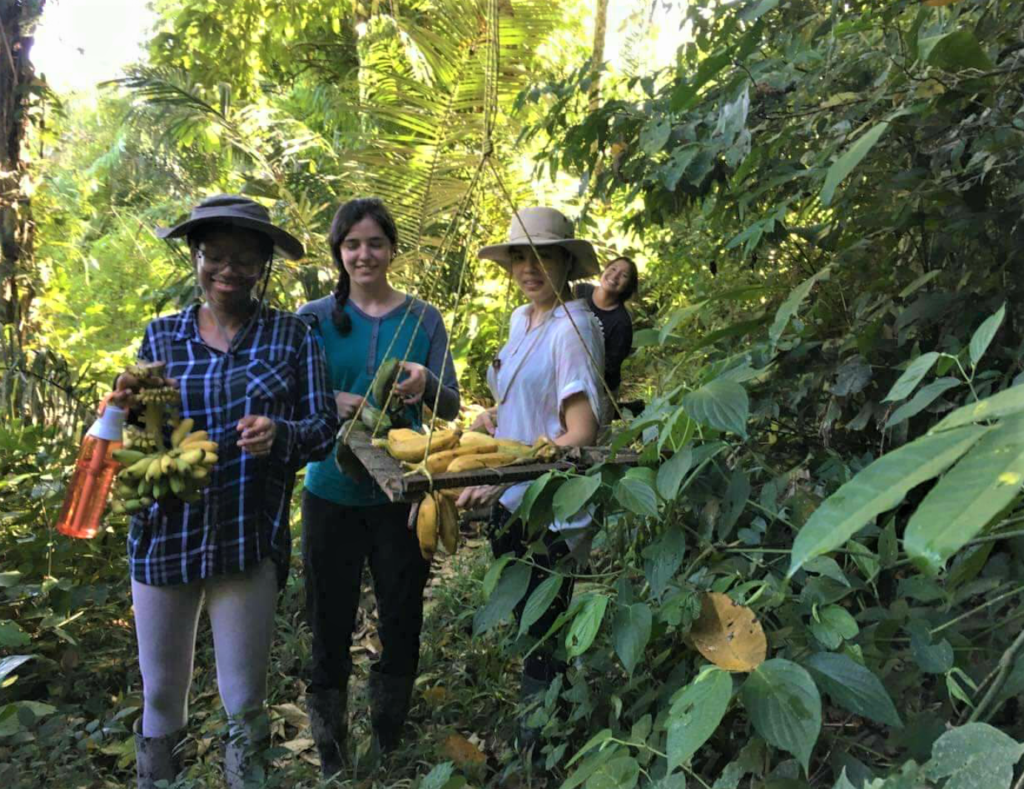
Mammal monitoring is a two-part process. Firstly, we attract mammals with fruits via designated platforms for them to find and eat, establishing a regular foraging pattern. Secondly, we observe them and record their presence onto our database. Our game cameras allow us to identify more elusive or nocturnal mammals, and silent forest walks are great for spotting mammals during the day. Here at Panthera, a large proportion of our information gathered from animal monitoring has been acquired through the game camera. This motion-censored piece of equipment is capable of capturing images as well as videos and audio footage of whatever moves in front of its line of vision.Volunteers help to set up the game camera and retrieve it from the various sites it is placed. Once set up, the game camera remains at the site for between two and four weeks, depending on the location. When the camera is retrieved, it is checked for results. The footage on the camera is extremely crucial in assessing the level of animal activity and more specifically, what kinds of animals are present.
Reforestation of Degraded Ecosystems
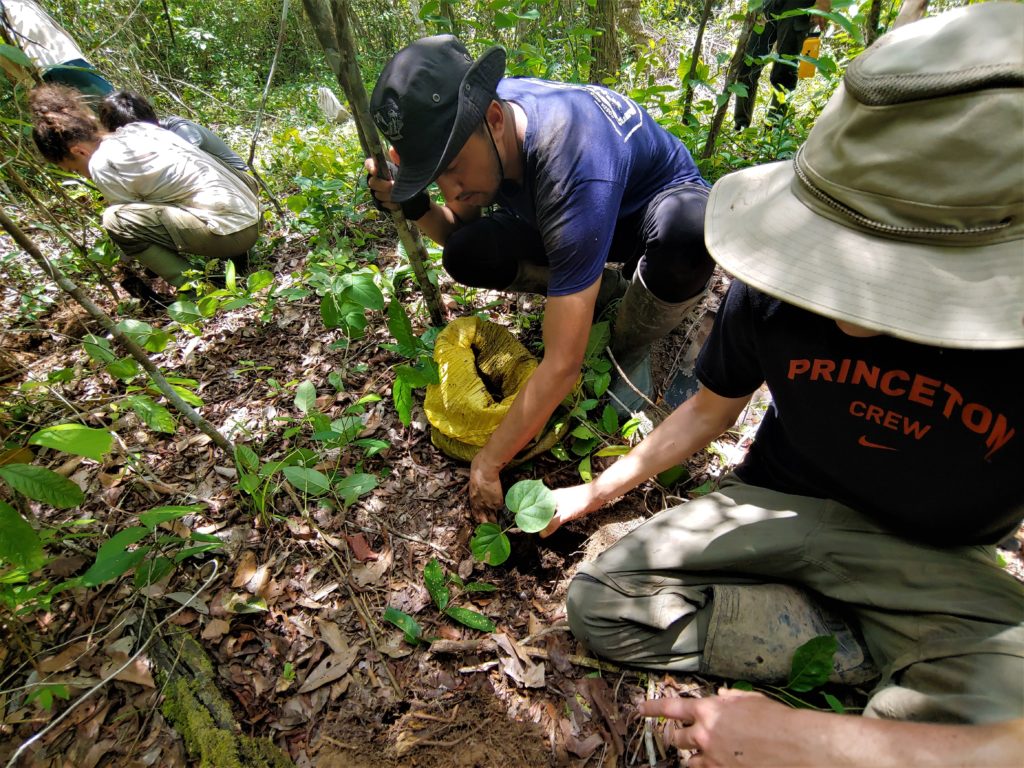
A large portion of rainforest is cleared every year due to tree-logging, gold-mining, agriculture, and cattle ranching. Even areas surrounding the reserve have fallen victim to farmers who have cut/burnt areas for personal use, only to abandon them after a year. Unfortunately, these areas on their own will take 15 years or more (depending on soil degredation) to grow back. Even then, the forest vegetation will not be like what it once was, and certain animals will no longer venture to these areas.
Although humans can negatively impact rainforest ecosystems, humans can also effectively facilitate their succession. At the reserve, a fair amount of our efforts are dedicated to the planting of trees in these open, abandoned sites and removing any invasive plants attempting to overtake these areas. By carefully selecting and planting things like wild fruit trees and shrubs, we not only accelerate the process of forest generation, we can also coax wildlife back into these disturbed areas. Attracting key herbivores with plants that are important food sources will also bring along their predators, thus reaching a wider range of wildlife
Creation of Rainforest Ecosystems
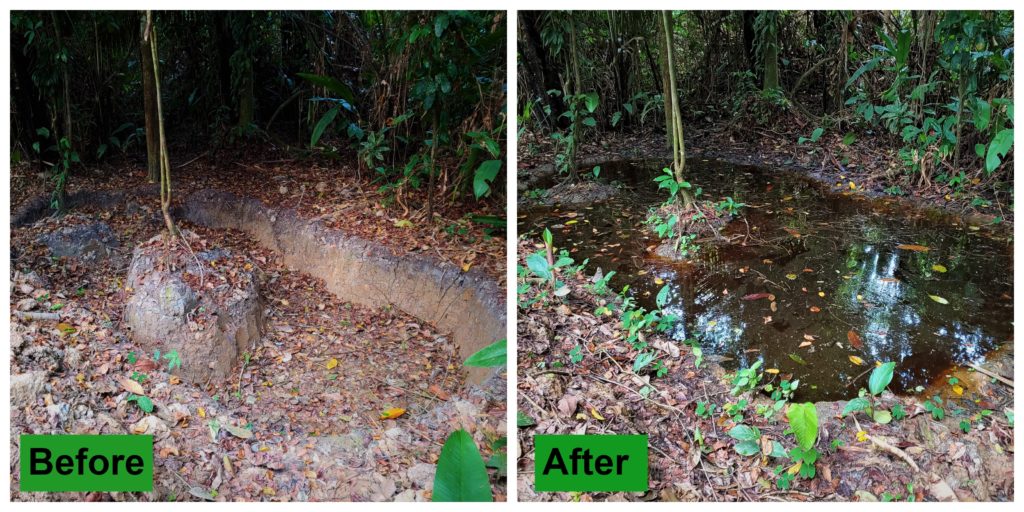
Building off our reforestation efforts mentioned above, we also strive to create suitable microhabitats for particular animals to discover and inhabit. While planting important trees plays a role in recreating a rainforest habitat, other activities completed that contribute to this project include digging artificial ponds, constructing artificial reptilian nesting sites, clay lick reactivation, and so much more. By creating these crucial sites, we are able to provide water sources, breeding sites for aquatic and terrestrial animals, and cooling off points for mammals who need mud or water to lower their body temperature. The more animals residing within reserve boundaries, the safer they are from poachers—and the better chance we have at spotting wildlife!
Bird Watching
-
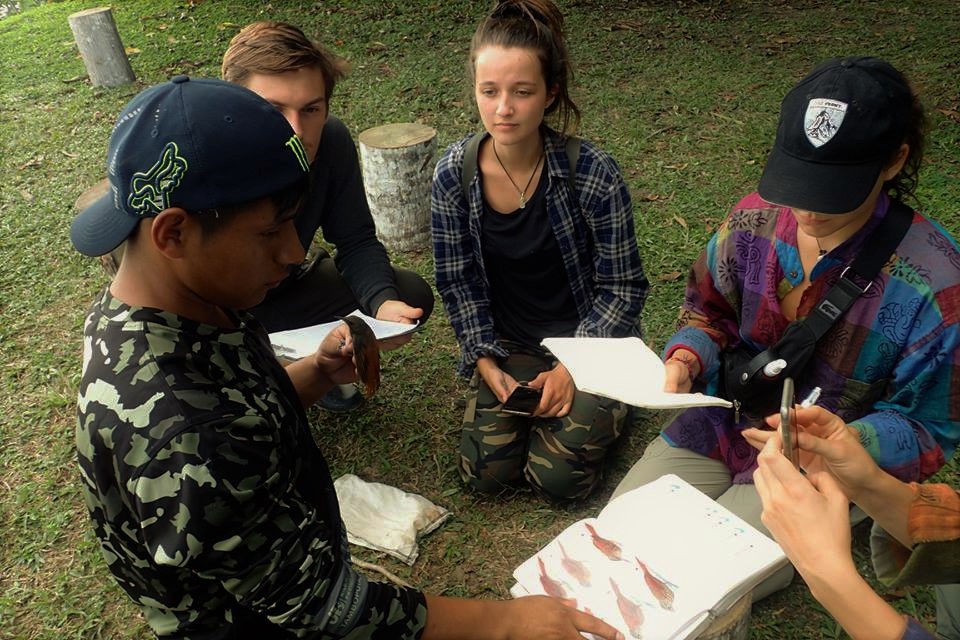
Bird Identification -
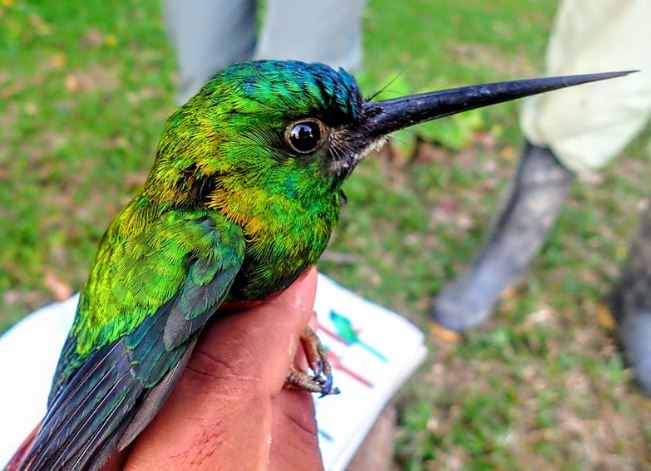
Birds in the Amazon rainforest make up at least a third of the world’s total bird species! Since birds are not able to be caught without the appropriate equipment, we rely on detailed photos to identify each species. A variety of macaws, small parrots, parakeets, and toucans are seen flying overhead while other smaller, less vibrant birds require more searching, as they commonly seek refuge in branches or within a complex network of vines. Like mammal monitoring, we observe by silently walking through the forest and recording data on birds spotted on low branches or up in the canopy. Using our observation tower located in a seasonally flooded forest area accessible by bridge also gives us the opportunity to spot birds more easily in open areas.
Agroforestry & Neotropical Permaculture
-
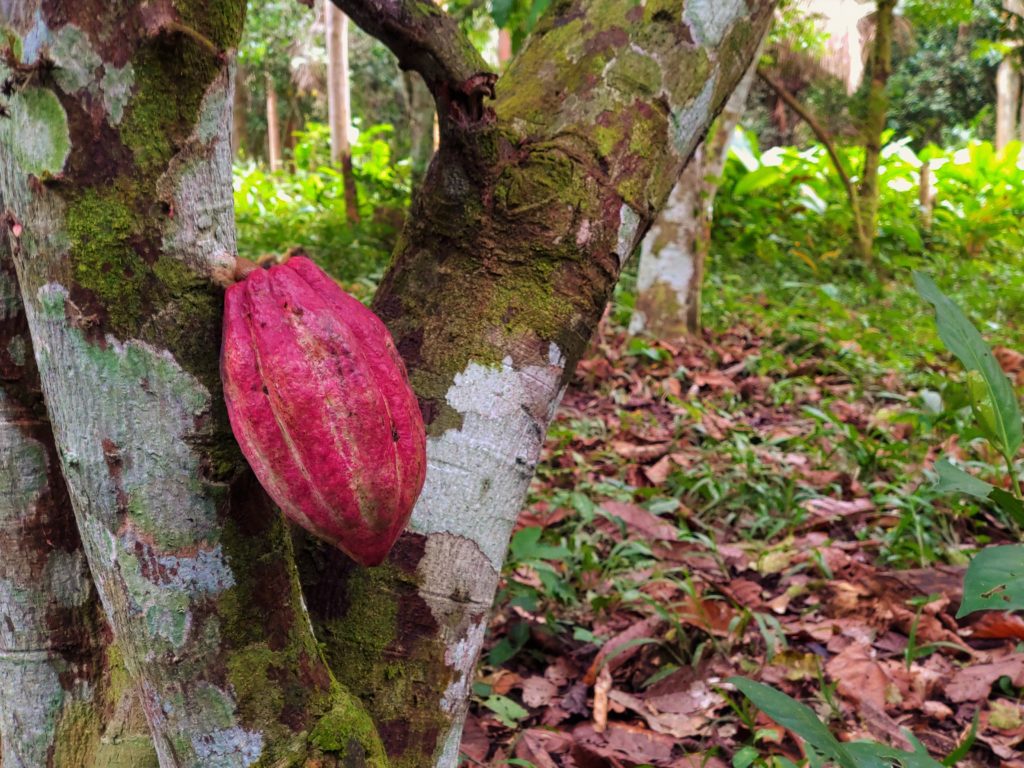
Fresh cacao fruit hanging from its tree
One of our missions here is to maintain and expand our organic agroforestry system, including plants such as coffee, cacao, banana, pineapple, avocado, (etc). Our volunteers are taught how to safely use a machete to maintain the land and help it grow. The agroforest naturally offers a huge wealth of biodiverse flora and fauna; a perfect space for both to thrive.
A majority of agriculture in this region involves selecting a piece of rainforest, slashing and burning it to quickly clear the land, constructing a monoculture to sell in town or export to other areas, and abandoning the land once the soil is wiped out of nutrients, causing crop yields and profits decrease. In the end, this results in agricultural workers finding another piece of rainforest to repeat the process over and over again.
Our agroforestry plot involves the production of crops as well, but the way in which it is done differs from traditional agricultural practices. Rather than clearing large sections of rainforest, we incorporate native trees, shrubs, and vines into the area along with our selected crops to maintain a rainforest ecosystem and minimize the impact we have on surrounding wildlife. Furthermore, allowing leguminous plants and small vines to remain carpeted on the ground of the agroforest help retain soil moisture and fertility. All in all, the agroforest promotes agricultural sustainability by demonstrating the Amazon rainforest’s remarkable process of efficient nutrient cycling.
Herpetology
-
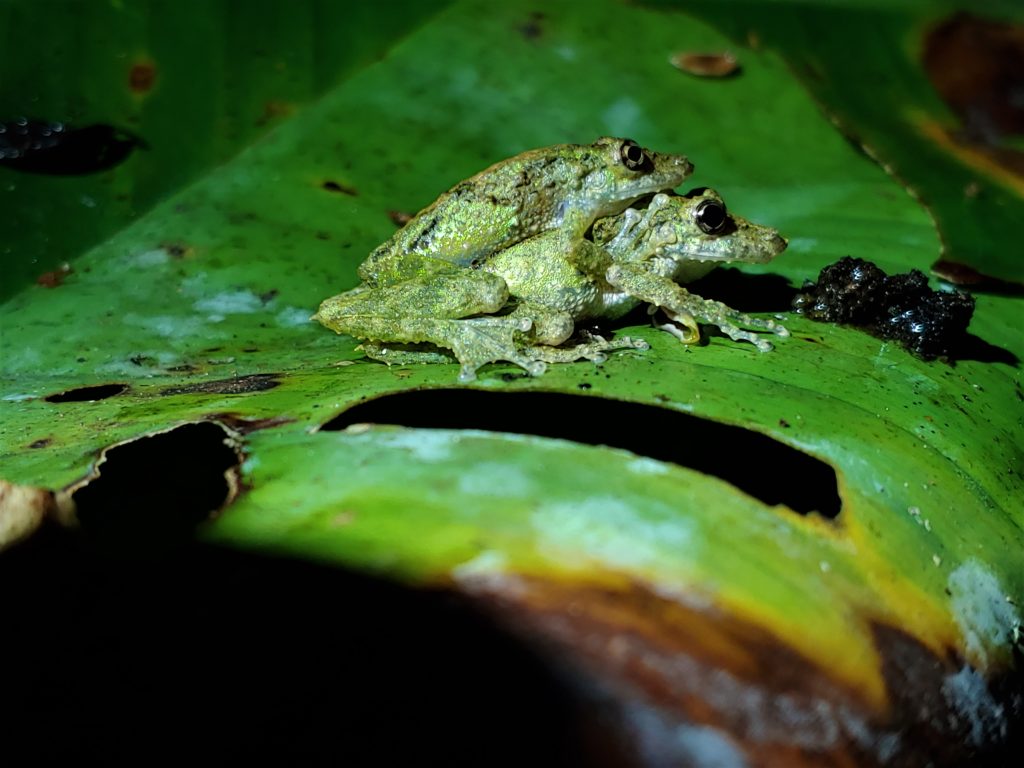
Amphibian mating season -
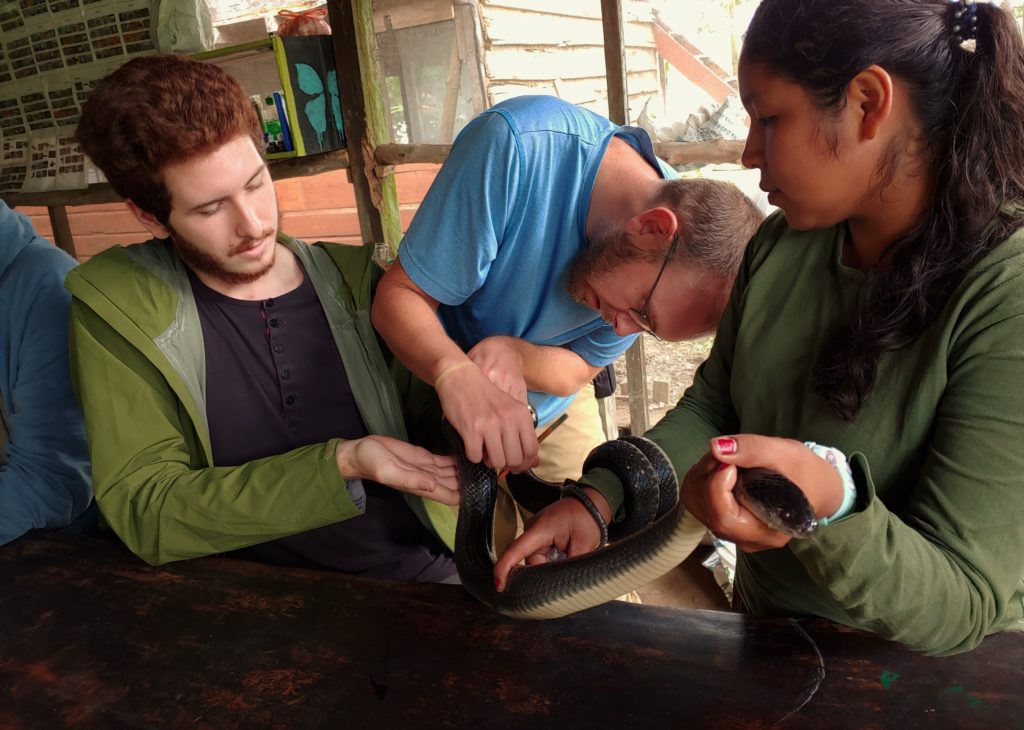
Volunteer counting scales to identify snake
Explore the rainforest by day and night whilst searching for some of the Amazon’s most impressive creatures. This type of monitoring involves walking slowly in the forest to locate many of the snakes, lizards, and frogs lying idle on the branches, leaves, and forest floor. Specimen are caught and placed into and kept in fauna boxes until we return to camp to identify them. An identification key is then used to identify the genus and species of each individual before we take pictures and release them back into the wild. This provides the perfect opportunity for volunteers who wish to learn how to use and navigate an identification key to practice with diverse Amazonian creatures Sometimes we are lucky enough to find a species of animal known to be rare to the region!
Reserve Patrols & Rainforest Expeditions
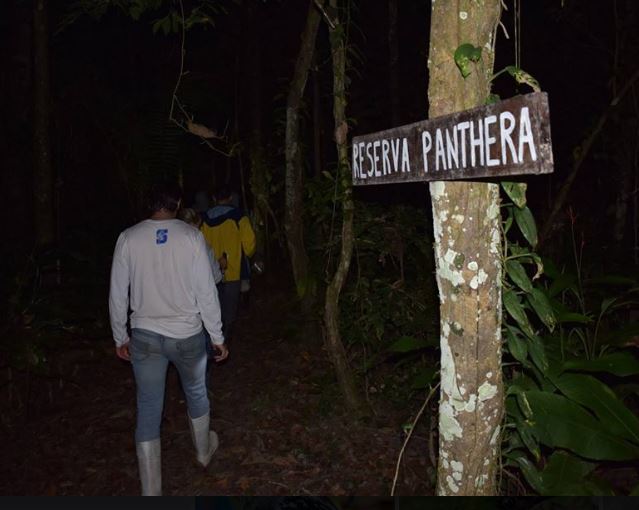
Trekking through the rainforest gives us the opportunity to explore new and important parts of the surrounding landscape and is an exciting opportunity to witness remote and sensitive ecosystems. This enables us to learn more about the way these systems function by taking first-hand observations. With the use of a GPS and satellite imaging software, we are able to create our own map of all the terrain we explore, including uncharted territory. By marking points of interest on our GPS device and uploading them into our satellite imaging program, we are able to locate these areas again and study them with ease. Important sites including permanent water sources, illegal activity, rare plants, claylicks, swamps and other types of things that are hidden from view on the satellite map must be marked to increase our knowledge of what can be found in the Amazon.
Another important part of our work here at Panthera Sanctuary is to ensure the protection and preservation of our surrounding ecosystem. The foothills of the Andes are plagued with gold-mining activities and illegal tree-logging, so a portion of what we monitor involves collecting evidence for this and tracking their presence. Our most frequent finding is tree-logging equipment and newly-opened trails, in which GPS points are recorded and photos are taken. Following this, files are put together and reported to the authorities. We are proud to say that Panthera is free from tree loggers and gold miners, however, our neighbors’ lands require a more watchful eye. Since we help them patrol their land, they in turn authorize us to walk through their portions of rainforest. More land to explore!
